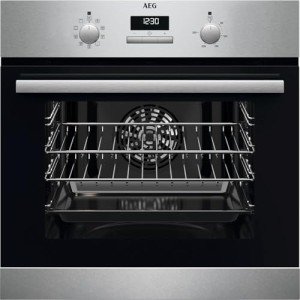single-electric-oven6616
single-electric-oven6616
Its History Of Oven For Kitchen
Choosing the Right Oven for Your Kitchen: A Comprehensive Guide
Ovens have been a cornerstone of cooking ventures for centuries, supplying a vital device for both amateur cooks and expert chefs alike. As modern cooking areas develop, so too do the kinds of ovens readily available, each developed to meet the diverse requirements of cooking enthusiasts. The following guide provides a comprehensive summary of different oven types, their features, and considerations to remember when selecting the right oven for your kitchen.
Types of Ovens
When thinking about an oven for your kitchen, it is essential to understand the numerous types available. Each kind of oven has unique attributes that can affect cooking approaches and total kitchen functionality.
1. Standard Ovens
Traditional ovens are the a lot of basic type, frequently discovered in homes all over the world. They normally utilize either gas or electric power and provide an uncomplicated cooking approach.
- Gas Ovens: Utilize natural gas or lp, offering instantaneous heat and outstanding temperature level control.
- Electric Ovens: Use electric coils or a heating component, typically providing more even heat circulation.
2. Convection Ovens
Convection ovens are designed with a built-in fan that flows hot air around the food, resulting in quicker cooking times and more even results.
- Benefits:
- Reduced cooking times (up to 25% faster)
- Even baking and browning
- Downsides:
- May require changes to dishes (lower temperature level or shorter time)
3. Wall Ovens
Wall ovens are a popular choice in contemporary kitchen areas, as they can be set up at eye level, conserving counter area and increasing accessibility.
- Single Wall Ovens: Ideal for smaller kitchens, ideal for everyday cooking.
- Double Wall Ovens: Increase capacity for big meals and multiple meals.
4. Range Ovens
Range ovens combine both a cooking range (with burners) and an oven, supplying a compact option for kitchen areas with limited area.
- Freestanding Ranges: Standalone systems that can suit any kitchen design.
- Slide-in Ranges: Designed to fit snugly in between cabinets for a more integrated look.
5. Steam Ovens
Steam ovens utilize steam instead of dry heat, preserving wetness and nutrients in food.
- Advantages:
- Healthier cooking choice
- Ideal for baking bread and cooking veggies
- Factors to consider:
- May require additional steps for particular dishes
Key Features to Consider
When selecting an oven, think about the following functions that can boost cooking experiences:
| Feature | Description |
|---|---|
| Size | Ensure it fits your kitchen space and meets your cooking needs. |
| Self-Cleaning | Makes maintenance simpler, eliminating the need for manual scrubbing. |
| Smart Technology | Ovens with Wi-Fi connection can simplify cooking through apps. |
| Temperature level Range | A broader range can enhance cooking flexibility. |
| Security Features | Functions such as car shut-off can improve kitchen security. |
Tips for Choosing the Right Oven
Selecting the ideal oven can often be a complicated job. Here are several suggestions to streamline the procedure:
-
Identify Your Cooking Habits: Consider how typically you cook and the types of meals you prepare. For circumstances, devoted bakers might prefer a convection oven for even baking, while those who prepare roasts may lean towards a traditional oven.
-
Measure Your Space: Before buying, determine the location where the oven will be put to guarantee it fits easily with your kitchen style.
-
Consider Your Budget: Ovens range extensively in price. It is essential to set a spending plan and think about the long-lasting worth of the appliance.
-
Read Reviews: Online evaluations can provide insight into a design’s efficiency and dependability in time.
-
Examine Energy Ratings: Energy-efficient designs can conserve you cash on utility expenses in the long run.
Upkeep and Care
To take full advantage of the life-span of your oven, proper upkeep is key. Follow these basic steps:
- Regular Cleaning: Make cleaning up a practice after each usage, and utilize self-cleaning features when offered.
- Inspect Seals: Ensure that the door seals securely; this avoids heat loss throughout cooking.
- Calibration: Periodically inspect the oven temperature level for precision. An oven thermometer can assist with this.
- Expert Servicing: Schedule routine maintenance contact a professional to guarantee the home appliance operates efficiently.
FAQs
What is the very best kind of oven for a little kitchen?
For little kitchens, wall ovens or compact range ovens are outstanding alternatives as they take up less area and can be set up to suit readily available cabinets.
How do I maintain a gas oven?
Frequently examine the burners for obstructions and make sure that the oven’s interior is cleaned to avoid buildup from spills and splatters.
Can I bake and broil in the exact same oven?
Yes, the majority of contemporary ovens permit both functions. Examine the user manual for specific guidelines on running your oven.
What should I do if my oven isn’t heating up properly?
First, check if it’s correctly plugged in or if the gas is flowing. If concerns persist, consult a service technician to detect prospective issues.

Is it worth purchasing a wise oven?
If cooking convenience and the most current technology appeal to you, purchasing a smart oven can be worthwhile, as they provide a range of enhanced cooking features.
Selecting the best oven for your kitchen is essential to both the functionality and pleasure of your cooking experience. By considering the different kinds of ovens, essential functions, and upkeep ideas, customers can make an educated decision that meets their culinary needs and preferences. Whether you are a casual cook or an enthusiast, the best oven can substantially elevate your culinary experiences.



